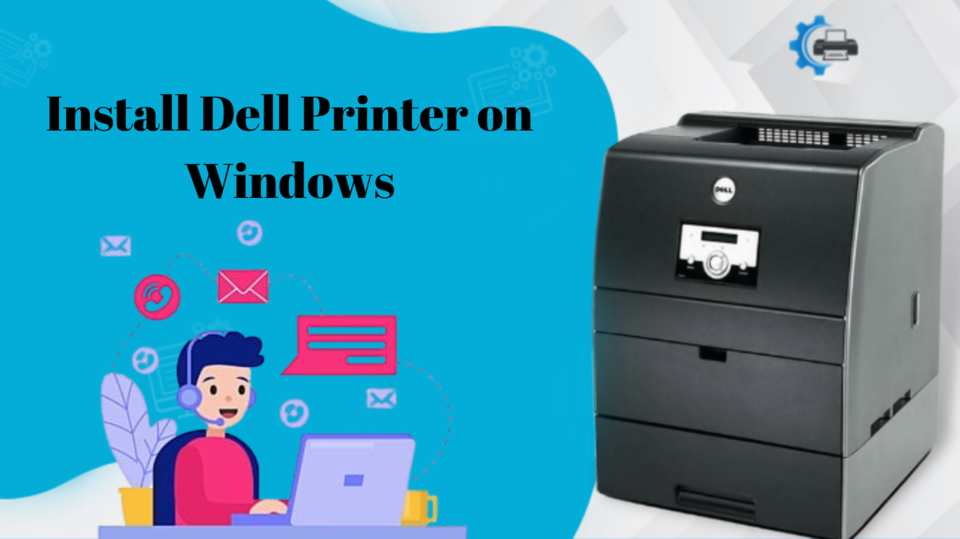
In today’s digital workspace, the ability to quickly set up devices is an essential skill. Among these, installing a printer remains one of the most common yet occasionally overlooked tasks. Whether you’re setting up a home office, configuring a new workstation, or replacing an outdated printer, understanding how to install a Dell printer on a Windows operating system can streamline your productivity.
This guide outlines a detailed, step-by-step process to install Dell printers on Windows devices, covering both USB and wireless setups. The intention here is purely to share knowledge, avoiding service-related discussions or promotional content.
Why Focus on Dell Printers?
Dell has long been recognized for producing reliable and performance-oriented technology for business and personal use. Although Dell no longer manufactures printers, many models are still widely used and supported through drivers and software updates available from official channels. Knowing how to install them on current Windows versions, including Windows 10 and 11, ensures compatibility and performance.
What You’ll Need Before Installation
Before beginning the installation, it’s useful to have the following:
Dell Printer (connected via USB or Wi-Fi)
Windows PC or Laptop
Stable Internet Connection (for driver downloads if necessary)
Printer Model Number (e.g., Dell E310dw, B2360dn)
USB Cable (if installing via wired connection)
Step 1: Unpack and Set Up the Printer
Unbox the Printer: Remove all packaging materials, tapes, and protective inserts.
Install Ink or Toner Cartridges: Open the access panel and insert the supplied cartridges.
Load Paper: Place plain A4 or letter-size paper into the tray.
Power On: Connect the power cord and switch on the device.
Ensure the printer boots without errors before proceeding to software setup.
Step 2: Connect Printer to Windows
Option A: USB Connection (Direct Installation)
Plug the USB Cable from the printer into an available USB port on your computer.
Power on the Printer if not already done.
Automatic Detection:
Windows will usually detect the printer and install basic drivers automatically.
A notification will appear in the system tray confirming successful setup.
Print Test Page (Optional):
Go to Control Panel > Devices and Printers.
Right-click the printer, select Printer Properties, and click Print Test Page.
If automatic detection fails, proceed to manual driver installation (see Step 3).
Option B: Wireless Network Connection
For models with Wi-Fi capability:
Navigate to the Printer Menu:
Use the control panel to access Wireless Setup Wizard or Network Settings.
Choose Your Wi-Fi Network (SSID):
Enter the password using on-screen keys or buttons.
Confirm Connection:
The printer display usually shows a confirmation once it connects.
On Your PC:
Go to Settings > Devices > Printers & Scanners.
Click Add a printer or scanner.
Select your Dell printer when it appears and follow prompts to install.
If Windows doesn’t detect the printer automatically, a manual driver installation may be required.
Step 3: Download and Install Dell Printer Drivers
If Windows does not automatically install the correct driver, follow these steps:
Visit the Dell Official Website:
Navigate to https://www.dell.com/support
Search for Your Printer Model:
Enter the model number in the search bar.
Select the appropriate product from the list.
Choose Your Operating System:
Make sure the dropdown matches your Windows version (e.g., Windows 10 64-bit).
Download the Driver Package:
Choose the recommended driver or full installation package.
Click “Download” and save the file.
Install the Driver:
Double-click the downloaded file.
Follow the on-screen instructions to complete the setup.
Restart Your PC (if prompted) to finalize the installation.
Step 4: Configure Printer Settings
After successful installation, you may want to customize printer settings:
Default Printer: Go to Settings > Devices > Printers & Scanners, and set the Dell printer as default.
Print Preferences: Right-click the printer > Printing Preferences to choose paper size, print quality, orientation, etc.
Advanced Settings: Access features like duplex printing or toner-saving modes through the driver interface.
Step 5: Test the Printer
To confirm everything is working:
Open a document or image.
Select File > Print.
Choose your installed Dell printer.
Adjust print settings if needed.
Click Print.
The document should print without error. If not, revisit the previous steps or check for updated drivers.
Troubleshooting Common Installation Issues
Despite following the correct steps, users may occasionally encounter installation issues. Here’s how to address the most common ones:
1. Printer Not Detected (USB)
Ensure the cable is not damaged.
Try a different USB port.
Restart both the printer and computer.
2. Printer Not Detected (Wi-Fi)
Confirm that the printer and PC are on the same network.
Disable VPNs or firewalls temporarily if blocking discovery.
3. Driver Installation Fails
Run the installer as administrator.
Check for Windows updates that may be interfering with installations.
4. Printer Shows Offline
Go to Devices and Printers, right-click the printer > See what’s printing, and uncheck Use Printer Offline.
FAQs
Do I need to install software if my printer works with plug-and-play?
While Windows may install a basic driver automatically, downloading the full-feature driver from Dell’s website ensures access to all printing and scanning functions.
Can I use a Dell printer with Windows 11?
Yes, most Dell printers compatible with Windows 10 will also work with Windows 11, provided the correct drivers are available.
What if Dell no longer lists my printer model?
Try using a generic driver or search archived drivers. Compatibility mode may also help in older models.
Is an internet connection required for installation?
Yes, if you need to download drivers. However, once drivers are downloaded, installation can be completed offline.
Can I install multiple Dell printers on the same PC?
Yes. Windows allows multiple printer installations. Each can be named and configured individually.
Conclusion
Installing a Dell printer on a Windows system is a straightforward process when equipped with the correct tools and information. Whether connected via USB or wirelessly, the process largely involves ensuring proper physical setup, driver installation, and configuration through system settings. By understanding these steps, users can manage installations independently and efficiently.













